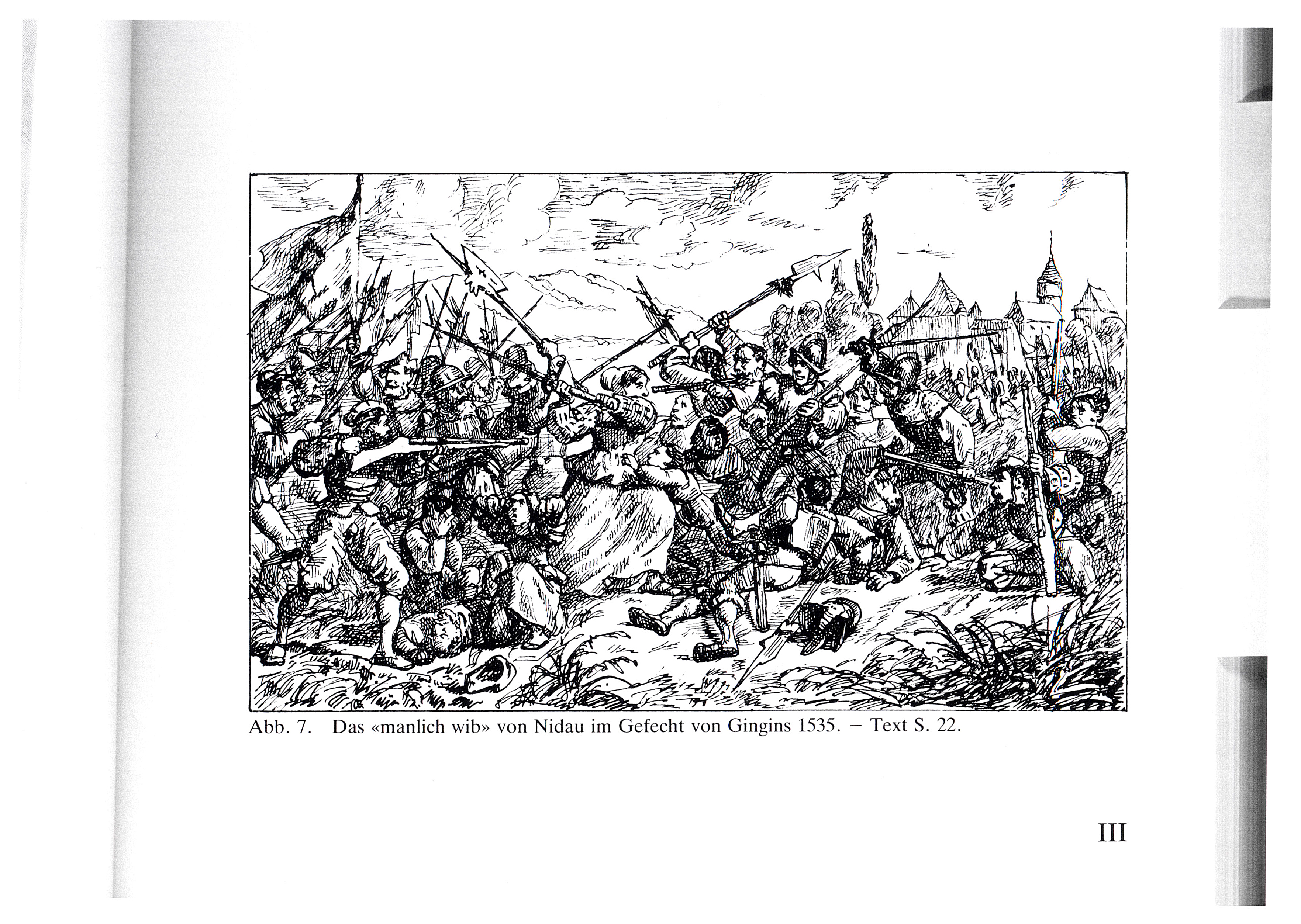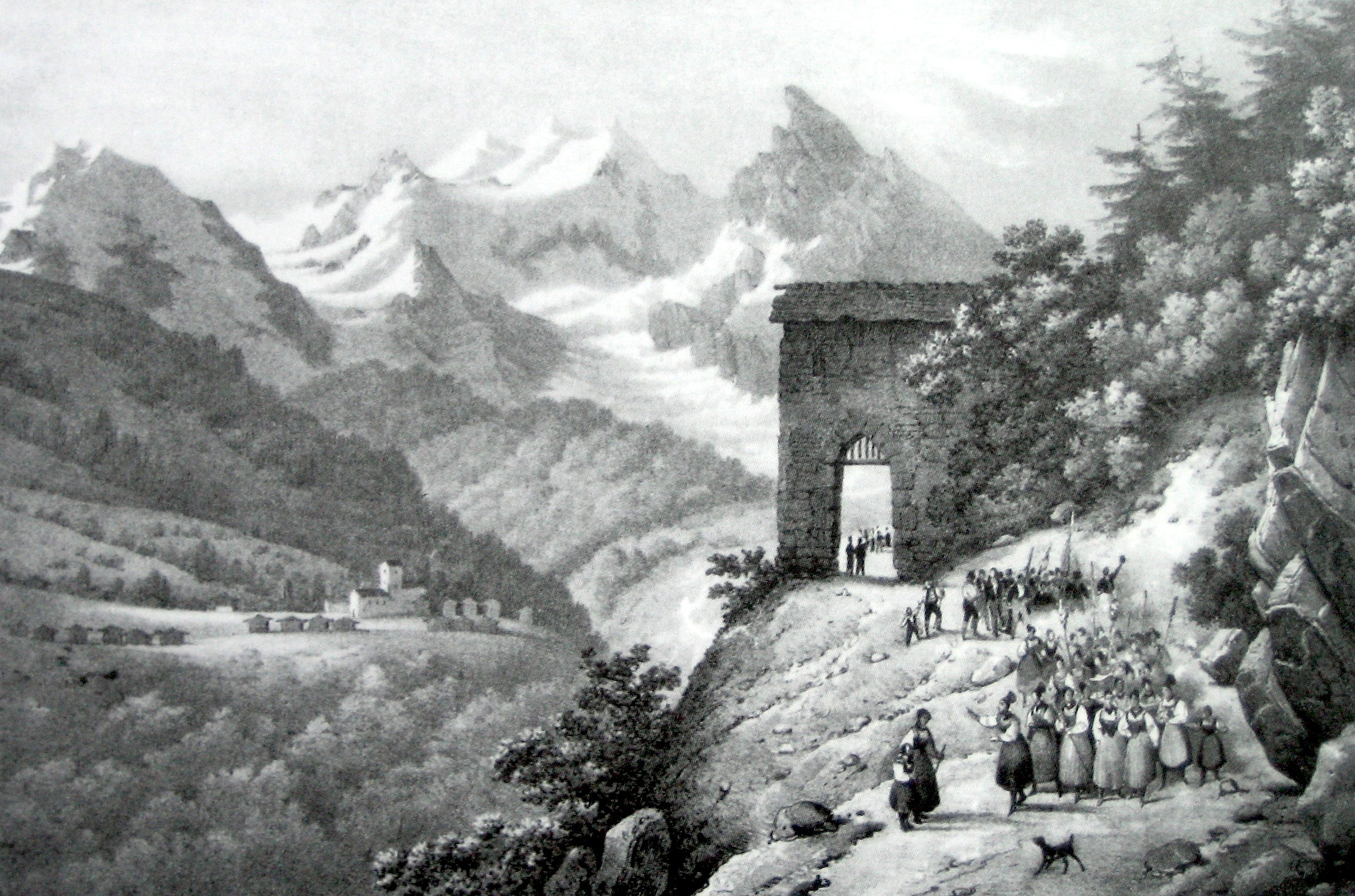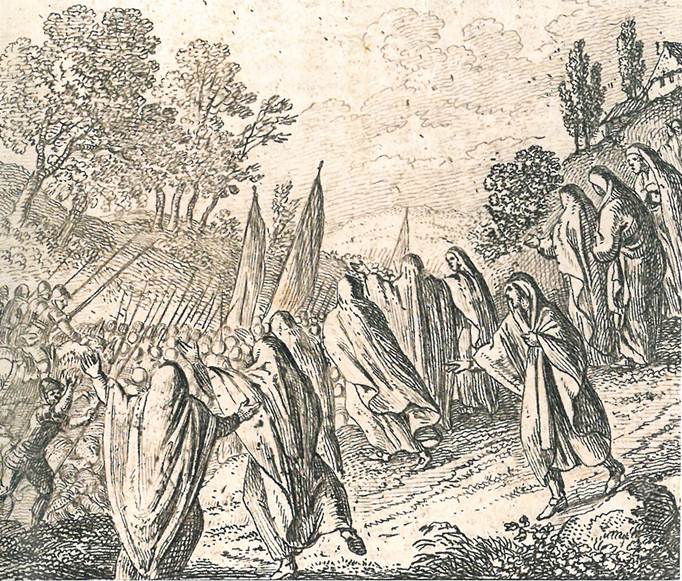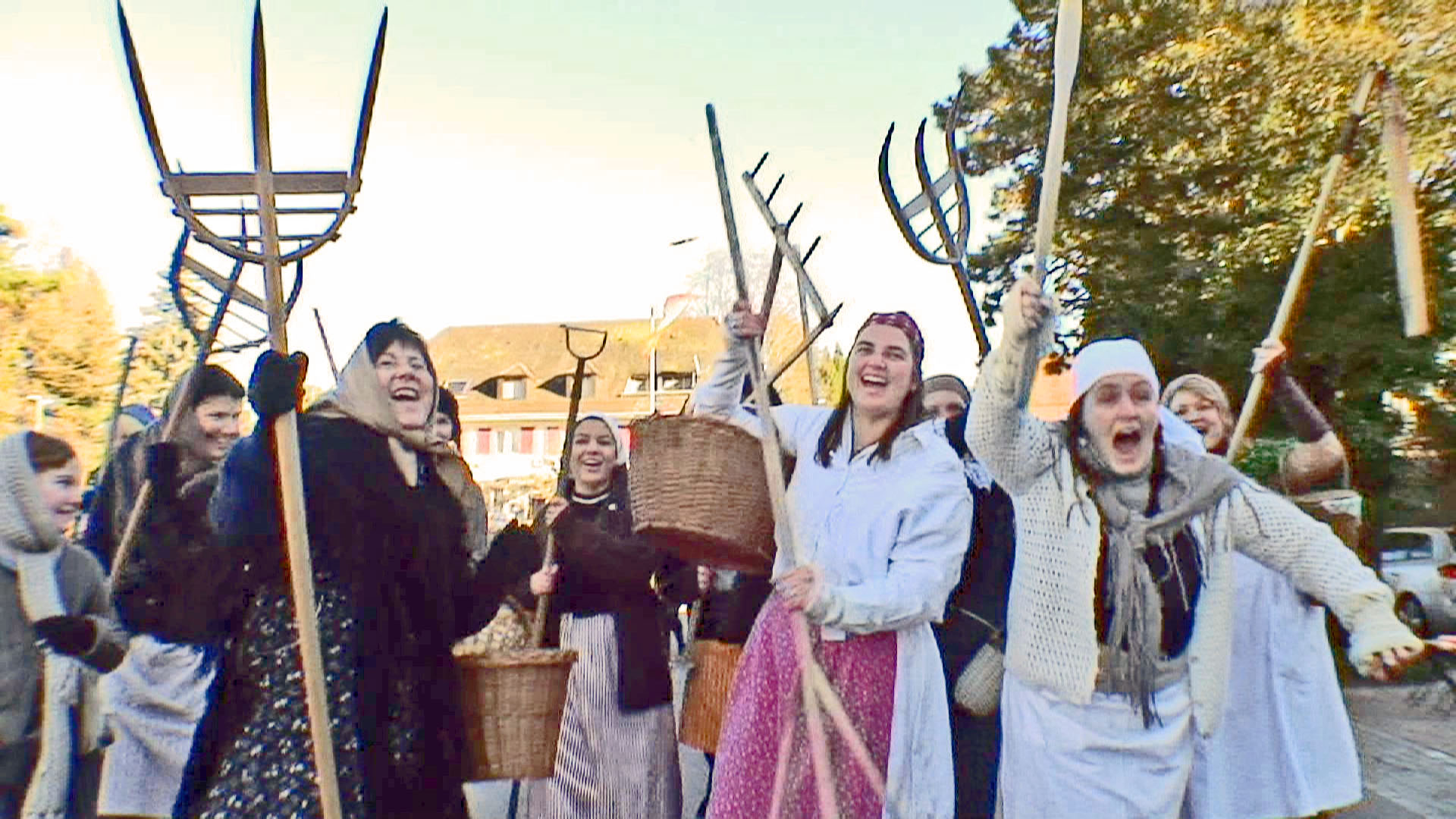Remembering Switzerland’s forgotten heroines

Women who hurl rocks and tree trunks onto unsuspecting attackers, women who make a huge din to alarm and fool the enemy, women who dress up as soldiers – Swiss women have always shown themselves ingenious and brave. Or so the legends have it.
There are many such stories in Swiss history. But where such legendary figures as William Tell – who defied the wicked Austrian governor who made him shoot an apple off his son’s head – are well known to all Swiss, the tales of heroic Swiss women are on the whole less familiar outside their own particular regions.
The women who drove back the enemy by bombarding them with rocks lived in the Val Lumnezia, a side valley of the Rhine in canton Graubünden. This was in 1352; the men were elsewhere keeping enemy forces at bay, and when the women realised that some of the invaders were trying to sneak in by a back way, they took action themselves.
In the Val Lumnezia this story is part of local folklore. It took place at the Porclas, a gate in the wall barring the entrance to the valley. The gate is now also known as the Porta da Femnas, the Women’s Gate. But curiously, it is easier to find information on the internet about extensive commemorations in 1952 than it is about the battle itself.
Retired teacher Nicolaus Caduff recently published a photo book of the 1952 event, which had drawn thousands of visitors. Even Interior Minister Philipp Etter attended. For Caduff, the celebration reflected how – post-World War Two – the Swiss were still concerned with defending Swiss values against Nazism and fascism in its neighbours.
“It wasn’t just about the local area, but also about the canton of Graubünden as a whole, and to a certain extent about Switzerland as a whole,” he told swissinfo.ch
The local priest, Toni Halter, already a published author, wrote a play reconstructing the battle, which was performed by the villagers. He didn’t just use the oral tradition for his source material: he also ran his play past several historians.
Forty years later the 1952 commemoration was itself commemorated, with a television film that used plenty of old footage of the play. There were some star roles, but over 2,000 people from the entire valley had a bit part.

More
Women help defend the village of Vella
Living traditions
Unlike some other stories of heroines, the battle of Porclas has not spawned an annual celebration.
However, the action of the women of Fahrwangen and Meisterschwanden in 1712, two villages in modern-day canton Aargau, is celebrated every January – but only since 1912. For three days the women rule the village, and catch men in big nets. It’s a reward for the women who marched through the woods making a racket which tricked the enemy into thinking they were an army of reinforcements.
The best known Swiss female heroine, one of the few who is famous outside her immediate region, is probably Mère Royaume of Geneva, who is said to have hurled a pot of boiling soup onto troops trying to sneak into the city at night in December 1602, raising the alarm. That event is commemorated every year too, and although it celebrates the people of Geneva as a whole, a chocolate version of Mère Royaume’s cauldron features prominently.
These two festivities figure on the list of 167 Living Traditions issued by the Federal Office of Culture in 2012. So does the Stoss Pilgrimage in Appenzell Inner Rhodes, remembering a battle of 1405 in which women allegedly joined the men and hurled stones at the enemy. But ironically, it was not until 1991 that women were allowed to take part in the pilgrimage.

Women in a man’s world
What do these stories show about the way in which women were traditionally regarded in Switzerland, where women did not get the vote at federal level until 1971?
“In many of the stories the women are shown outside their traditional roles – they act as if they are ready to fight, but they don’t actually do so,” Meret Fehlmann of the University of Zurich’s Institute of Popular Culture Studies, told swissinfo.ch.
She cited the story of the women of Fahrwangen, and also those of Zurich in 1292 who, in the absence of their menfolk, put on armour and stood among the trees of the Lindenhof hill; the besieging troops, being too far off to see what was really going on, fled in the belief that the town was well defended.
Fehlmann thinks the difference in attitude to the two sexes could explain why the women’s stories are relatively little known.
“Perhaps people didn’t really want to promote women in this role. William Tell, who shot a tyrant, did what a man is supposed to do: he defended himself and his family and stood up for certain principles. But women didn’t have the same scope for action, so that could be why people were more reticent about telling these stories.”
Switzerland as we know it today formed gradually over the course of many centuries. In mediaeval times, in some parts of what is now Switzerland noble families were fighting each other for control of territory; in others local communities were already strong enough to assert their own interests, on the one hand getting rid of feudal lords and on the other expanding their territory.
In 1292, Duke Albrecht I of Habsburg was putting down a wide-ranging uprising in the western part of his lands, in much of modern-day Switzerland. The city of Zurich was among those rebelling against him; although Albrecht put down this revolt, the Habsburgs were gradually driven out of all their holdings in Switzerland.
At Porclas the invaders were the troops of the Count of Werdenberg, who was based further down the Rhine valley and was trying to expand into territory under the control of the baron of Belmont.
The Battle on the Stoss in 1405 was a victory of a small army of Appenzellers over a much larger Austrian force – the beginning of the long struggle during which the people of Appenzell freed themselves from the rule of the Prince-Abbot of St Gallen and eventually joined the Swiss Confederation.
The citizens of Geneva had ousted the Dukes of Savoy in the 16th century, and adopted the Reformed religion. The duke made a final attempt to recapture the city in 1602, his troops scaling the walls at night. But Mère Royaume was up late making soup and heard them coming; by hurling the contents of her cauldron over them she raised the alarm and the city was saved.
The second Villmergen War of 1712 pitted Zurich and Bern against the Catholic cantons of central Switzerland; Fahrwangen and Meisterschwanden were at that time ruled by Bern. The war ended in a Catholic defeat.
‘Be wary of women’
Elisabeth Joris, a historian who has written extensively about women, pointed out that at the time when the Swiss Confederation was coming into being, from about the end of the 15th century to the 17th century, the system of government was dominated by important families, not by individuals, each with a man – the father – at the head.
Men were responsible for the military organisation, which went hand in hand with the political organisation. But women often exercised great influence in this society; one way they did this was by helping their menfolk to high office, often by cunning – a trait associated with women in no small measure thanks to the biblical figure of Eve.
That fits in with a story like the Lindenhof, she explained. “The women are not challenging the rule of the men; they act as they do because the men aren’t there. The enemy doesn’t decide not to storm the hill because they are afraid of women, but because they think they are men.”
Georg Kreis, professor of the history of Switzerland at the University of Basel, suggested another way of looking at women’s guile.
“The meta-message is perhaps that you should be wary of women. They are dangerous because they’re so crafty.”
But he agrees about the role of the sexes, citing the example of the women of Appenzell at the Battle on the Stoss.
“The message there is: ‘even the women’ took part. The point of the story is in the ‘even’. It makes the women strong, but at the same time reminds us that they are [actually] weak and peace-loving. Men are the yardstick of normality.”
“Looking at this from a psychological point of view, I think these stories are probably male fantasies. It wasn’t women who produced them. Women are allegories, they are guardian goddesses, who inspire men,” he said.

In compliance with the JTI standards
More: SWI swissinfo.ch certified by the Journalism Trust Initiative


You can find an overview of ongoing debates with our journalists here. Please join us!
If you want to start a conversation about a topic raised in this article or want to report factual errors, email us at english@swissinfo.ch.